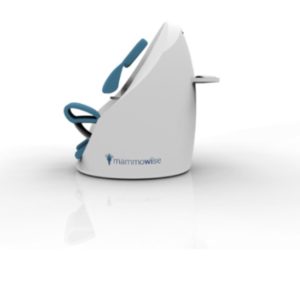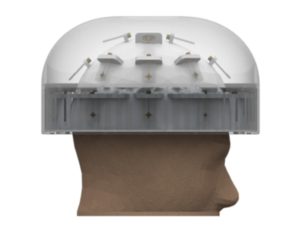Medical sensing and imaging using electromagnetic waves in the radio frequency range is emerging as a disruptive new technology to solve big problems in medical diagnostics. Radio wave radiation is the section of the spectrum between 300 MHz and 300 GHz. Microwaves and radio waves are non-ionising and therefore safe for use in medical applications. Driven by wireless communications, improvements in radio-wave technologies, including reductions in cost and size of radio wave hardware components, offer radio-wave imaging technologies an important competitive advantage over other medical diagnostic technologies.
Radio-wave imaging exploits differences in the dielectric properties of tissues that are related to physiological factors such as water content and temperature. META is developing novel imaging devices which can be future game changers in two huge medical imaging challenges.
Early screening of breast cancer with a safe, comfortable and affordable system
There is currently no widely available breast cancer screening technology that is affordable, comfortable to use, and without side effects including emotional and physical stress. Also, routine breast cancer screening is not typically offered to women below forty years old. META is developing a safe, affordable, and accurate screening technology, not to replace mammograms or MRI screening, but to expand the current screening procedure to a large group of younger patients in a cost-effective and reliable manner, thereby revolutionizing future breast cancer prevention, detection, and treatment. The breast imaging system will feature a unique design and technical achievements with the goal to overcome current challenges in achieving clinically acceptable imaging resolution.

Detection and monitoring of stroke with a portable scanner
The impact of stroke incidents is immense. According to the World Health Organization, five million people die world wide every year, and another five million are permanently disabled every year due to stroke incidents. Stroke is placed third among reasons for acute death and first among reasons for neurological dysfunction in the western world. META is combating this health problem by working towards developing an imaging scanner which can be used inside an ambulance to determine the type of stroke much earlier than CT scanners inside a hospital. This is particularly important for ischemic stroke patients, which account for over 80% of total cases and for which early detection is crucial for thrombolytic treatment.
